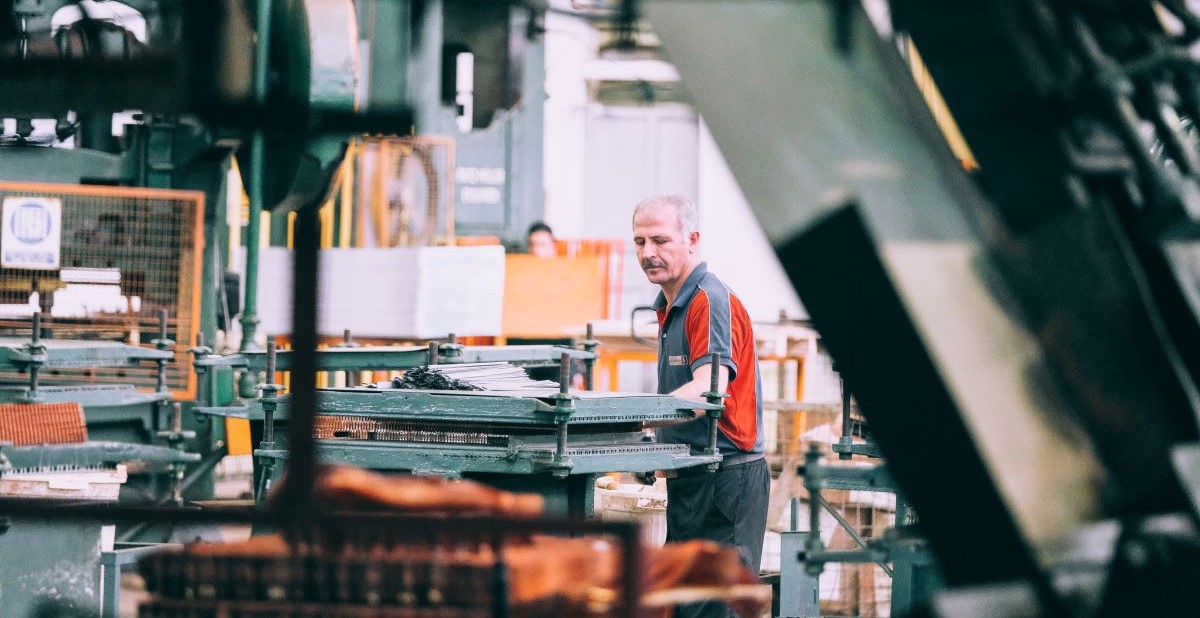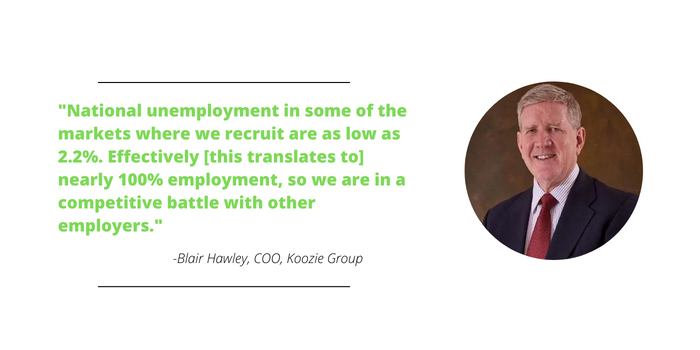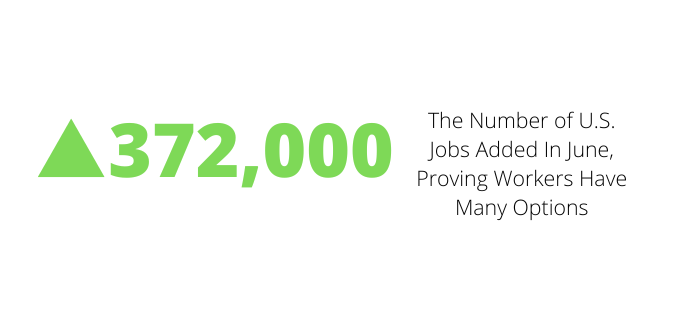Suppliers Grapple With A Shortage Of Factory Workers

Skilled laborers have perhaps always been the U.S. economy’s most important and plentiful commodity. Recently, however, many companies in promotional products and other industries have learned not to take their abundance for granted. Those who do the hands-on work—making the products, packaging the shipments, operating the machinery—have become increasingly difficult to hire and retain amid current labor market conditions.
Companies of all sorts are facing myriad obstacles with multiple root causes, navigating supply chain issues and inflation exacerbated by global events, but labor shortages are a clear thorn in the side of business as usual.
A 2021 U.S. Chamber of Commerce survey reported that 88% of commercial construction contractors claimed to have moderate-to-high levels of difficulty hiring skilled workers. A third of those contractors said they turned down work because of labor deficiencies. Nearly a year later this problem has extended well-beyond construction and affected many other segments, like retail and promotional products suppliers.
Multiple suppliers have told PPAI Media the same story this spring and summer: It’s hard to find and keep workers right now, leading to increased competition for the people who actually piece together promotional products. “Finding the right people has always been a challenge,” Powerstick.com operations manager Tyler Walls says. “Over the past two to three years this has become increasingly difficult.”
The Problem
Labor shortage is a problem that extends well beyond the promotional products industry.
“We are experiencing the first ‘employee’s market’ we have seen,” Walls says. “We witness this trying to go to our favorite restaurant that is forced to close early due to staff shortages, or long waits at the local coffee drive-thru. Once you get to the window, you see there is only half the number of staff there used to be.”
Boeing is having such trouble hiring qualified workers that the problem has delayed the company’s ability to build a new Air Force One airplane. Despite raising wages, the only U.S. factory of leading tampon brand Tampax cannot currently hire and retain enough factory workers to maintain desired production.
 A survey from the Institute for Supply Management (ISM) reported that June marked a two-year low in factory activity—this despite an “overwhelming majority” of companies indicating they were hiring.
A survey from the Institute for Supply Management (ISM) reported that June marked a two-year low in factory activity—this despite an “overwhelming majority” of companies indicating they were hiring.
“[Difficulty finding labor] happened concurrently with the national unemployment rate sinking below 5%,” says Blair Hawley, COO of Koozie Group. “Most recently, that number has hit 3.6%, and in some of the markets where we recruit, that figure is as low as 2.2%—an all-time low. Effectively this [translates to] nearly 100% employment, so we are in a competitive battle with other employers.”
Indeed, the June jobs report showed that payrolls increased 372,000 in June, more than had been expected considering the raised interest rates implemented by the Federal Reserve in the spring. Doug Doug Donnell, HIT Promotional Products’ COO, says that June did show at least some promise in the hiring sphere despite difficult circumstances.
“We have seen our ability to find people trending in a positive direction over the last month or so, generally speaking, but we are still seeing fierce competition in the market, especially for more skilled positions,” Donnell says.
The issue as it pertains to the U.S. is a symptom of many circumstances, but in the simplest terms, there is a much greater demand for goods and products than there are skilled laborers working at the factories in the business of producing those goods and products.
Why Is This Happening?
Labor shortages can’t be untangled from the economic inflation happening in the U.S. and the root causes and lingering issues exasperating it. There is no simple explanation to the labor shortage, but one glaring reason is that an unprecedented few years, triggered primarily by the pandemic, has led many skilled laborers to reevaluate the difficult work they perform.
“It is difficult to pinpoint the exact reason, however we feel it is a result of people having the time to reassess what is important to them in life and finding other ways of generating enough income to live a new type of lifestyle,” Walls says.
The U.S. Bureau of Labor Statistics reported that just under 8 million skilled-labor jobs were lost near the onset of the pandemic. While basically half of those were filled naturally as restrictions were lifted, many of those workers reevaluated their careers or priorities and simply did not come back to employers who weren’t willing to meet their new demands. This has been referred to by some as “The Great Resignation” across many industries.
United States Unemployment Rate, source: tradingeconomics.com
Many older laborers took the disruption as a sign to embrace retirement or part-time work with an end-date in mind. Some of the younger workforce isn’t trained in these jobs, and the ones who are have other, less labor-intensive, options to make a living.
Working from home has become normalized in some fields, which can lighten burdens such as costly childcare. Understandably, skilled laborers would like to benefit from such practices as well.
Possible Solutions From A Promo Perspective
The most obvious solution is one that every employer is aware of: Offer higher wages.
Hawley says that Koozie Group has conducted external benchmark surveys to ensure the company’s total compensation proposition is competitive.
“It is notable that these benchmarks have increased significantly within 90 days of the previous one,” Hawley says.
In some parts of the U.S., companies in other industries have begun to offer signing bonuses of $5,000 or more for certain skilled factory workers, according to one promo industry COO. Koozie Group is also offering sign-on and referral bonuses, and the company has recently introduced a new-hire retention program which involves a two-way interaction with new hires at the 30- and 90-day intervals of their employment “to identify issues and support a positive onboarding experience.”
 That being said, both Hawley and Walls agree it’s about more than money.
That being said, both Hawley and Walls agree it’s about more than money.
Walls says that flexibility is what is most meaningful to workers, and thus Powerstick has focused on creating a culture where both employer and employee allow for some flexibility while meeting understood goals.
“Everyone has kids to drop off at school or appointments to make,” Walls says. “As of late we have offered flexible start times and have even started introducing work weeks under 40 hours. Some of our new hires can only start at 9:30 am or work four days per week.”
 According to Walls, this approach allows both sides to focus on “high quality standards and on-time delivery goals” without demanding the most rigid structure. Employees will reciprocate that flexibility, he says. “We don’t ever have to ask for an extra 10 minutes to complete a project, it just happens.”
According to Walls, this approach allows both sides to focus on “high quality standards and on-time delivery goals” without demanding the most rigid structure. Employees will reciprocate that flexibility, he says. “We don’t ever have to ask for an extra 10 minutes to complete a project, it just happens.”
Attempting to develop a culture that makes a workforce understand many of their needs will be met takes time, but Walls says Powerstick tries to quicken the process by recruiting through the valued employees the company already has.
“Since they are aware of our company culture, and what the job demands, we have turned to them to run through their contacts to make recommendations for the next hire,’ says Walls. “Once we find one good candidate, we can usually turn that into two or three future hires.”
Supervisors, benefits and company culture all affect employee retention and serve as valuable recruiting tools. “We can control most of these factors,” Hawley says. “And they are areas where we’ll continue to ask our leaders to raise the bar to make Koozie Group an employer of choice in the promo industry.”
Walls agrees and stresses that it is a two-way street in which employers have something to prove to employees.
“It is all about determining who will be a good fit and share the same work ethic we all value in each other,” Walls says.

